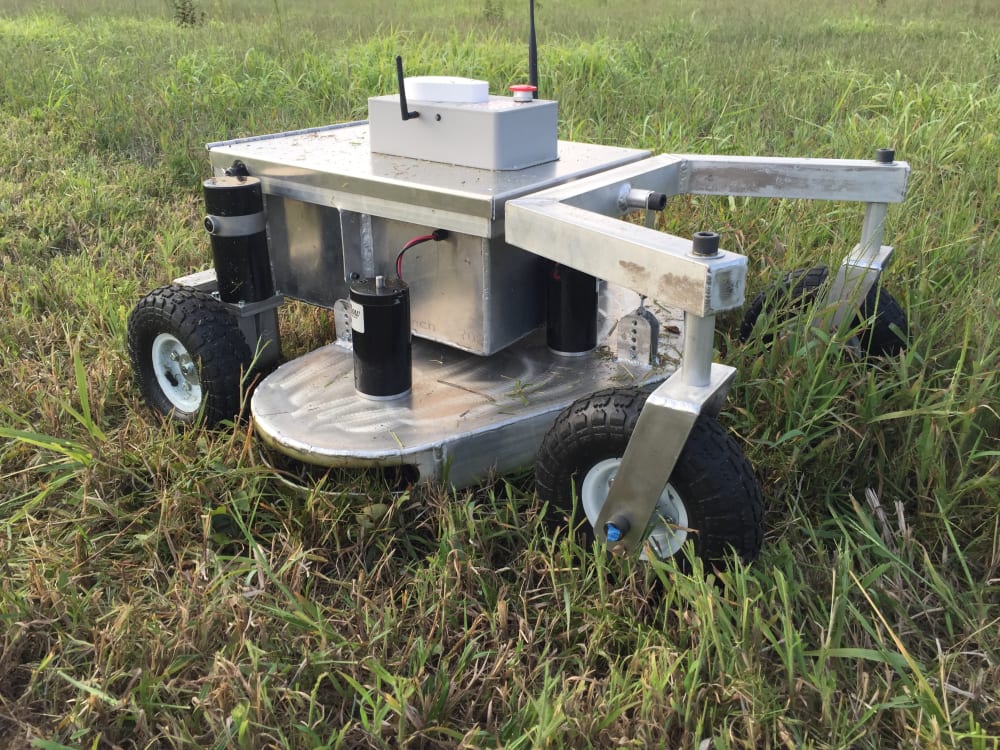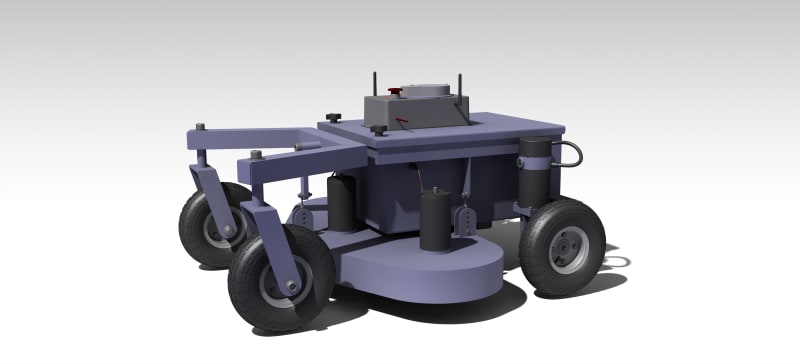
Each year, 90 Americans are killed in lawn mowing accidents. Countless more are injured, and the average homeowner will spend 1% of their life mowing their lawn. With technological advances in GNSS positioning, sensor fusion, and obstacle avoidance and detection, autonomous lawn mowers are now a real possibility. This product will save lives, prevent injuries, and save countless labor hours spent mowing grass compared to traditional methods.
The autonomous mower collects sensor data from RTK GNSS receivers, wheel encoders, accelerometers, gryometers, and magnetometers to determine its position and orientation. It can be programmed to follow specific paths and with the appropriate vision systems and can avoid and reroute itself around obstacles. Electric batteries power the mower, and with the ability to autonomously navigate to a charging station, this mower can operate 100% autonomously in any area.
While small scale autonomous mowers exist for residential lawns, no such product exists at larger scale. This autonomous mower does not require a boundary wire to keep it within an area and does not mow in random patterns. It can efficiently stripe lawns without human intervention and can cut tall, overgrown fields with effectively.
Eliminating the human from the design of traditional mowers results in major manufacturing efficiencies. Safety systems designed for the mower operator are no longer necessary. The size of the mower can also shrink drastically, resulting in a machine with a smaller footprint that can be manufactured with less material. Wheels and motors no longer need to be large enough for a 300lb operator. Manufactured at scale, this machine could cost less than an average riding lawn mower. It weighs 50% less than a riding mower of equivalent size and capability.
Most mowers sit idle in residential garages 99% of the time. This autonomous mower can be used continuously at any time of day, resulting in significantly larger output per machine. Instead of a residential street with 40 homes on it and 40 manual mowers sitting in garages, one autonomous lawn mower could service the entire street. These efficiencies will result in lower lawn care costs to consumers.
The applications for this product are not limited to residential mowing. This product could also be used for autonomous field mowing, turf management on golf courses, or highway median mowing, among many other potential applications.
The size of the landscape industry is estimated at $105 billion in 2021. While not all of that industry is mowing, a large portion of it is, and this product has the potential to disrupt it in a positive way for consumers, safety, and the environment.
Video
-
Awards
-
 2021 Top 100 Entries
2021 Top 100 Entries
Like this entry?
-
About the Entrant
- Name:Drew Sandlin
- Type of entry:individual
- Software used for this entry:CATIA V5
- Patent status:none





